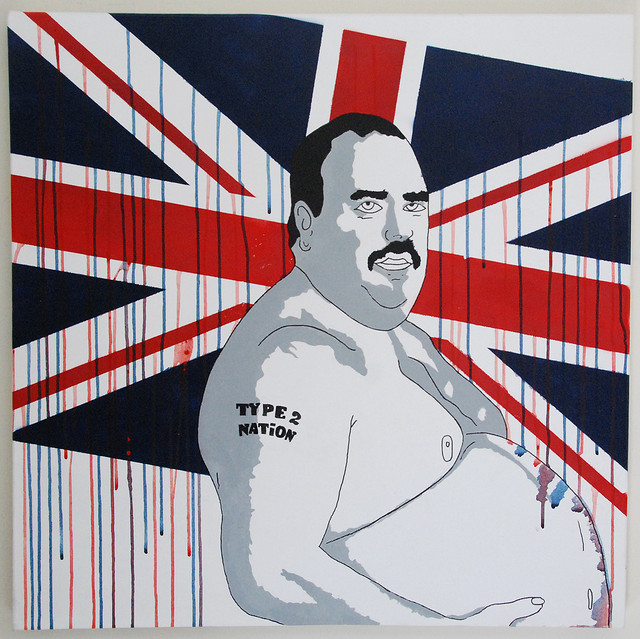by Mikhaeyla Kopievsky
Recently I hit the middle of my novel and discovered that it was everything everyone said it would be – brutal, intimidating, a bog of viscosity to rival the pitch drop. You get the idea. Yes, the middle of a novel can be rough – thankfully, there are hundreds of helpful articles and blog posts out there to give advice or just share the pain. Most of them advocate a common panacea – ‘structure’.
I’m a big fan of structuring novels (well, I am now). Gus the plumber opened my eyes up to the simple effectiveness of building a novel from a logline through to a detailed three act summary and the Script Lab helped me to further develop my novel’s structure with the eight sequence synopsis.
I saw these tools as my very own Higgs Bosons – allowing the small seed of my novel idea to gain mass as it waded through each of the higher stages of evolution. I have separate documents in the research folder of my Elementals scrivener file that document the development of my novel from a logline to a three-sentence summary, to a three-paragraph summary and to an eight-sequence synopsis. I have research documents that articulate the major plot development points of movies and books that have helped me develop a deeper understanding of these structural elements.
Basically, when it came to structure, I thought I had it sorted. But then the middle struck and my awesome structure wasn’t enough to help. I was like Artax in the swamp of sorrow. I had hit the saggy, mushy middle and it was dragging me and my novel down. As Chuck Wendig sagely notes:
The beginning’s easy because it’s like — BOOM, some shit just happened. The ending’s easy because — POW, all the shit that happened just lead to this. The middle is where it gets all gooshy, like wet bread or a sloppy pile of viscera.
Gross, right? That was my middle. Even though I had the basic structure, my middle needed more support than my beginning and end. It needed more detail. Deciding on that detail was a major challenge.
Plotting the Second Act – Planning your Road Trip
Plotting a second act is like deciding your route on an epic road trip. You know where you’re starting from and you know where you want to end up. If you have a decent structure, you also know some major pit-stops along the way (the midpoint and lowest point). But even with those basics decided, there are a multitude of routes you can take. Do you go the most direct? The fastest? The most scenic? Do you make sure you pass through all the towns with funky art galleries and quirky historical icons? Do you throw in a random “let’s check out Hobart, even though its nowhere near our general route, because let’s face it – it would be awesome and we’re never heading in this general direction ever again’?
With a road trip, you make these decisions based on non-negotiable and ideal criteria – time, budget, aversion to sea/air travel, penchant for art/history, etc. And that is what was missing from my middle’s plot development and structure – the CRITERIA.
So, what criteria do you need to set for your middle? For me, the answer is found within a solid understanding of your protagonist. What does she need to learn, discover, obtain, let go of, in order to react/respond to a) the midpoint and b) the lowest point, the way you need her to?
For instance, your story may be about a intergalactic guitarist who slays aliens with the wicked chords she strangles from her obsidian axe. The inciting incident is her discovery of a mega-alien that is seemingly immune to her cool, yet deadly, tunes. The first plot point comes when the mega-alien, annoyed at our protagonist and her black guitar, kidnaps her boyfriend. Now the music warrior protag must find a way to defeat this mega alien. As a feel-good novel about how cool music solves all problems, we know our protag will eventually defeat the alien and rescue her boyfriend. The mid-point comes when our hero realises that it is not a perfect technique that will do the ultimate damage, but a riff of unparalleled uniqueness and awesomeness. The lowest point will come when her guitar is smashed under the alien’s foot before she gets a chance to play her riff.
The mid-point sets up a situation where the protagonist needs to LEARN or DISCOVER the true solution to defeating the alien. The lowest point sets up the situation where the protagonist needs to DEVELOP her original musical voice that goes beyond her guitar-playing. Knowing what our hero needs, we can now start plotting out the situations and encounters and near-misses and glimmers of hope that will eventually give her what she needs: guitar battles with the mega-alien’s minions; conscription into a league of awesome guitar player warriors; an encounter with a grumpy, retired guitar warrior; an appreciation for the obscure and alternative musical elements of her world, etc, etc.
That’s what the middle is all about – knowing what the protagonists needs and watching her struggle and fail and almost obtain it – each time learning something or gaining something or developing in some way that will ultimately reward her.
I love thinking about the middle in this way because it also allows me to create an environment in which the bond between my reader and my protagonist will deepen. Making the events of the midpoint and lowest point all the more powerful, poignant, gut-wrenching and all sorts of other high-charged emotions.
Now to writing it… Wish me luck!
(Featured Image courtesy of id-iom, via Flickr Creative Commons)
Discover more from Mikhaeyla Kopievsky
Subscribe to get the latest posts to your email.


Pingback: How to get from A to B: Navigating the story between your plot points (Part 1) | [w]rite of passage
Pingback: That’s not my name | [w]rite of passage